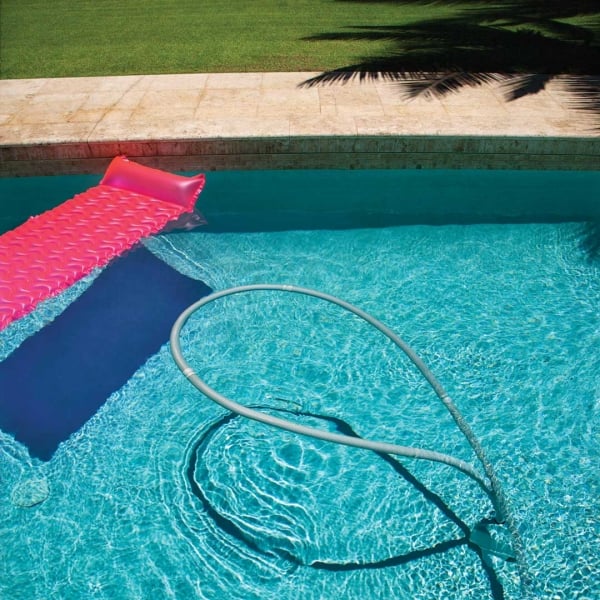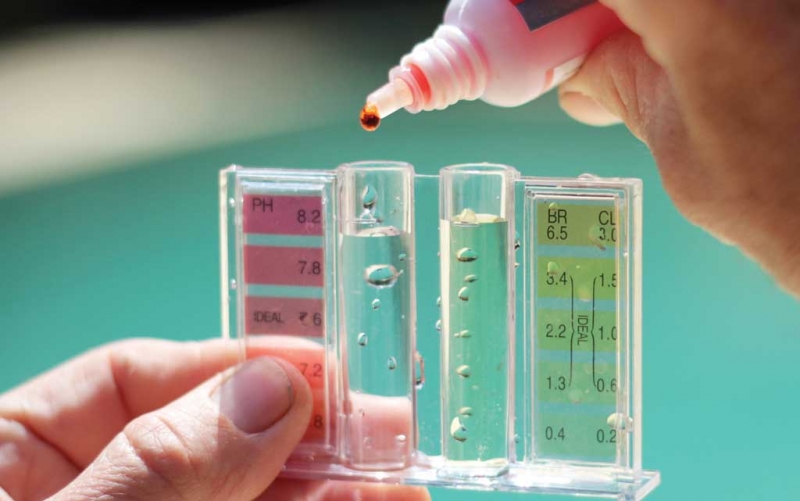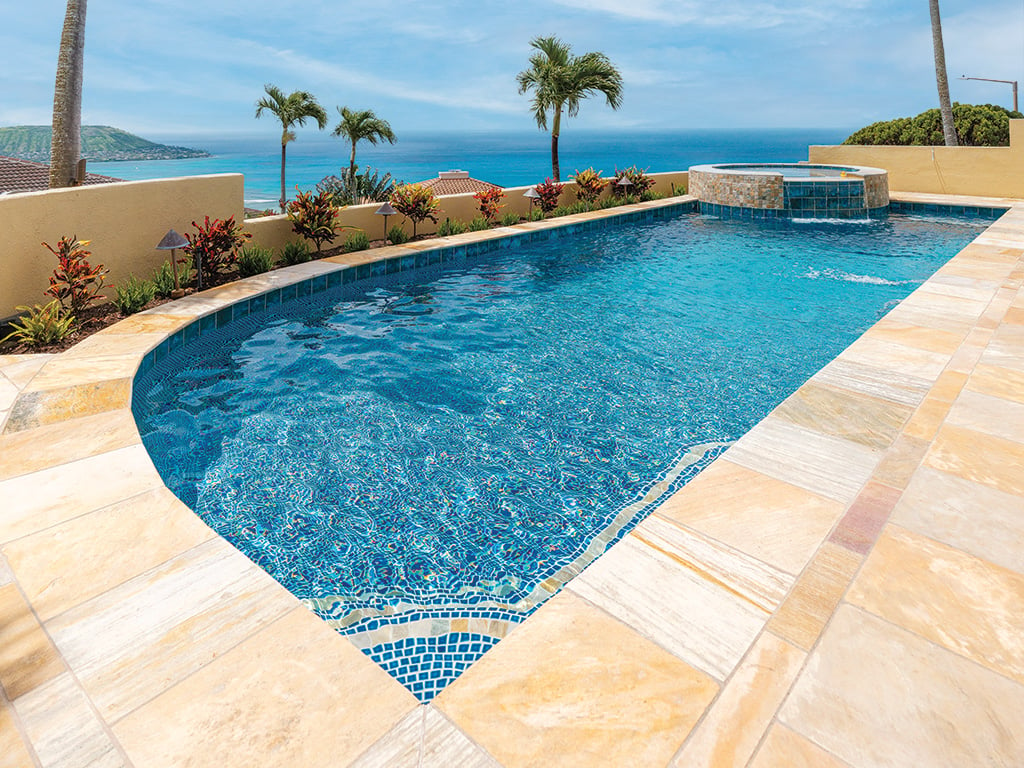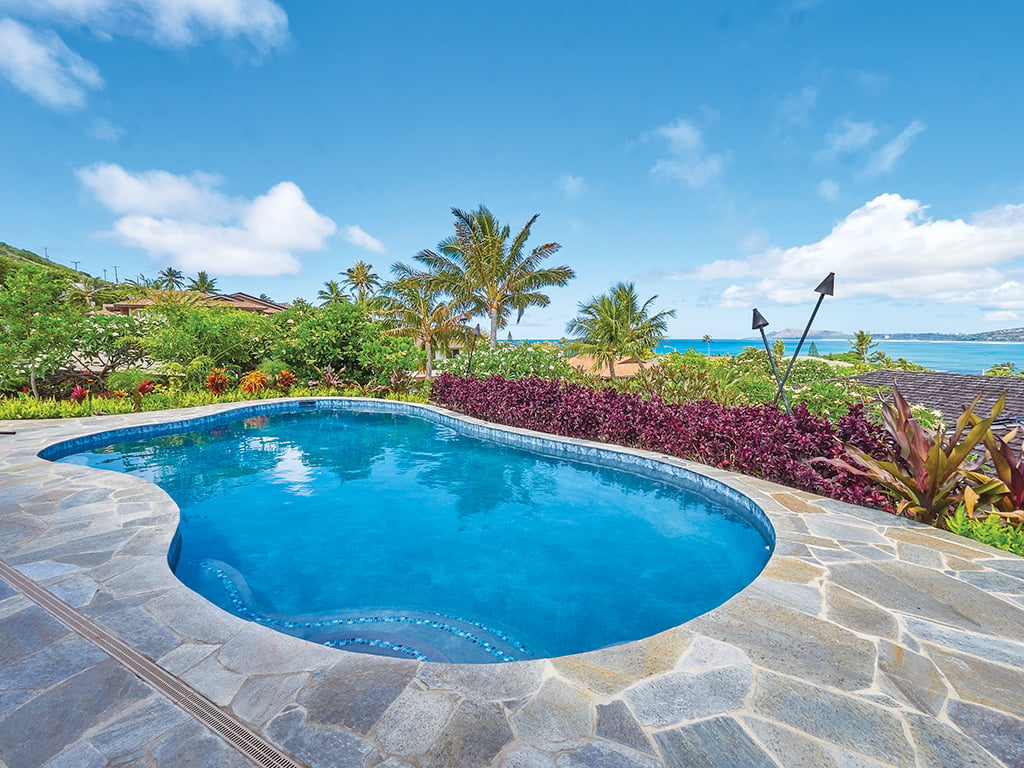The Water’s Fine
7 tips for maintaining the coolest spot in the home.

A backyard pool is an enviable luxury — especially as the weather begins to heat up — but there’s routine maintenance to consider. “Water is a living, breathing thing,” says Clifton Crawford of C & J Contracting. “If you don’t take care of it, you’re going to have all kinds of problems — algae, bacteria or corrosion. We’ve gone to some pools that are so bad there are barnacles growing on the bottom.
“Your pool is a permanent structure in your home. It’s going to take a lot of abuse, so you have to take care of it.”
Here’s a checklist to help keep your water clear.
Check the water level. (Weekly)
Water evaporates — a lot. “You can lose 35 to 50 gallons of water a day during the summer,” Crawford says. The water level needs to be halfway up the mouth of the skimmer (the area that opens into a basket to collect leaves and debris). This isn’t just about aesthetics. “You have to keep water running through system,” Crawford says. “If your skimmer runs dry, you can burn the pump out.” If you have trouble keeping up, consider adding an automatic filler (about $120) that kicks in when the water level drops or a solar pool cover that heats the water and dramatically reduces evaporation.

Vacuum pool. (Weekly)
Plan on taking about 30 minutes to empty the skimmer basket, skim leaves, brush the pool surface (below and above the waterline), test the water and vacuum. If you notice a lack of suction, it’s time to backwash.

Embrace the chemistry. (Weekly)
Use a water testing kit to check the levels for chlorine, PH, alkalinity. Most pool stores will test your water for free when you bring a sample. “
Three-quarters of the problems we see are due to one of two things. First, homeowners don’t take the time to use the test kit,” Crawford says. “Second, people who don’t run their pumps long enough every day because they’re trying to save electricity.”
Check chlorine tabs. (Weekly)
Refill the canister or pool floater. Never add tabs or chemicals to the pool skimmer basket; doing so can damage the pump and equipment.
Hire the right pool person.
Frustrated with it all? If you can afford it, hiring a qualified pool service will save you a lot of work. “Upkeep should take 15 to 30 minutes per week,” Crawford says. “If that doesn’t fit into your schedule, you should hire someone.” Homeowners should check credentials before hiring a pool-maintenance service and make sure you’re getting more than a guy with a net and chlorine tabs. A good service can run about $100 per month.
Run pool pump long enough. (Daily)
Even though most pumps are now made to be energy efficient, they still can be expensive to operate, so you’ll be tempted to reduce the amount of daily usage. Don’t do it. Most pumps have to run a minimum of eight hours to keep an average size pool clean. “For maximum clarity, your pump should be on long enough every day to clean every gallon of water in the pool,” Crawford says.
Clean D.E. filter. (Every six months)
Water flows through this filter, making the water sparkle. Debris builds up in the filter and it needs to be cleaned. This takes about an hour and is well worth the time.
DID YOU KNOW?
The average cost for maintaining a pool is $2,280 every year. Source: homeadvisor.com






